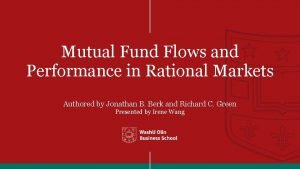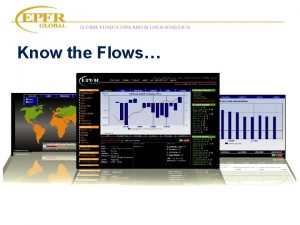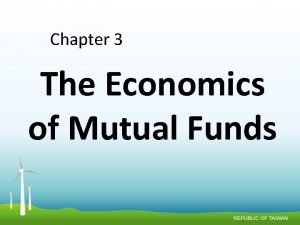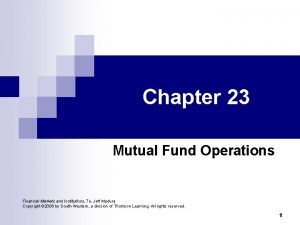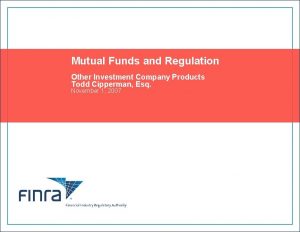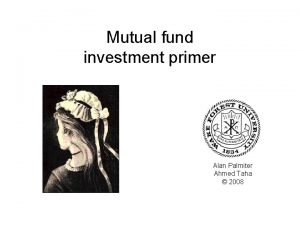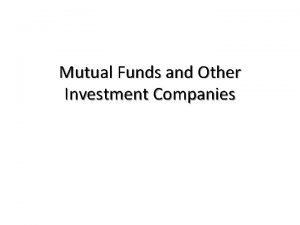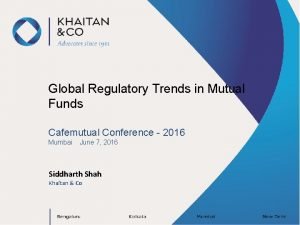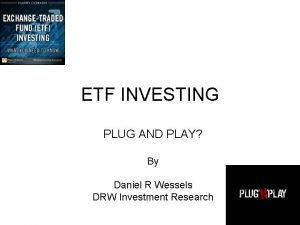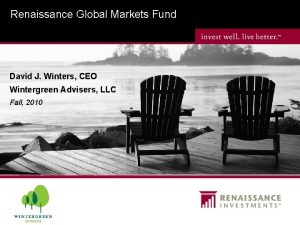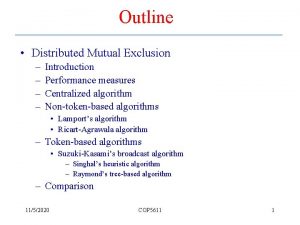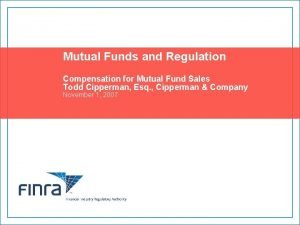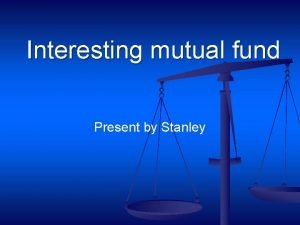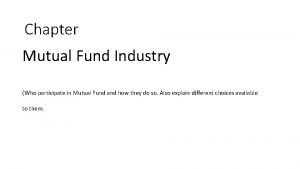Mutual Fund Flows and Performance in Rational Markets
















- Slides: 16

Mutual Fund Flows and Performance in Rational Markets Authored by Jonathan B. Berk and Richard C. Green Presented by Irene Wang

Contents I. Research Background II. Model Interpretation III. Conclusion IV. My Opinion

Research Background Issue: There is little evidence that mutual fund managers outperform passive benchmarks. The performance of mutual fund managers appears to be largely unpredictable and inconsistent. Aim: Construct a rational model for the relationship of fund flows and performance.

Research Background The model is based on four elements: • There is competitive provision of capital by investors to mutual funds. • There is differential ability to generate high average returns across managers but decreasing returns to scale in deploying these abilities. • There is learning about managerial ability from past returns. • There is no moral hazard or asymmetric information.

Model Interpretation - Significant parameters

Model Interpretation - Significant parameters

Model Interpretation – Analysis of funds flow and performance Funds flow to and from each fund so that the expected excess return to investing in any surviving fund is zero. Implications: • Good performance results in an inflow of funds. • Flows to younger funds respond much more dramatically to performance than flows to more mature funds.

Model Interpretation – Analysis of cross-sectional distribution of funds

Model Interpretation – Analysis of cross-sectional distribution of funds

Model Interpretation – Empirical comparison Select value for parameters based on existing evidence in literature.

Model Interpretation – Empirical comparison Light bars are the actual survival rates computed from the CRSP mutual fund database. Dark bars are what the model predicts the survival rates should be. Line marks the total number of funds that could have survived at each age.

Model Interpretation – Empirical comparison The dashed line shows the flow of funds for two-year-old funds produced by the model. The solid lines represent nonparametric estimates and 90 percent confidence intervals.

Model Interpretation – Empirical comparison The prior distribution over management ability using their parameter values.

Conclusion • Derive empirical expressions of a rational model for active portfolio management • Reproduce the salient features of the empirical evidence as equilibrium outcomes in a rational model • Fund flows rationally respond to past performance in the model • The flow-performance relationship is consistent with high average levels of skills

My opinion Contribution Limitation • Interesting topic • Detailed analysis of assumptions’ validation • Explicit expressions • Inconsistences with empirical evidences • Little analysis on why phenomenon happen • Focus more on the derivations of model rather than explanations

Question?
 Mutual fund flows and performance in rational markets
Mutual fund flows and performance in rational markets Amg data
Amg data Emerging portfolio fund research database
Emerging portfolio fund research database Us mutual fund industry size
Us mutual fund industry size Mutual fund disclaimer
Mutual fund disclaimer Mutual funds operations
Mutual funds operations My eoffice sip
My eoffice sip Uit vs mutual fund vs etf
Uit vs mutual fund vs etf Catholic mutual fund
Catholic mutual fund Old mutual absolute stable growth portfolio
Old mutual absolute stable growth portfolio Mutual fund primer
Mutual fund primer Mutual fund returns may be granted pass-through status if
Mutual fund returns may be granted pass-through status if Cafe mutual fund
Cafe mutual fund Investing plug
Investing plug Renaissance emerging markets fund
Renaissance emerging markets fund Petty cash management system
Petty cash management system Singhals heuristic algorithm
Singhals heuristic algorithm
